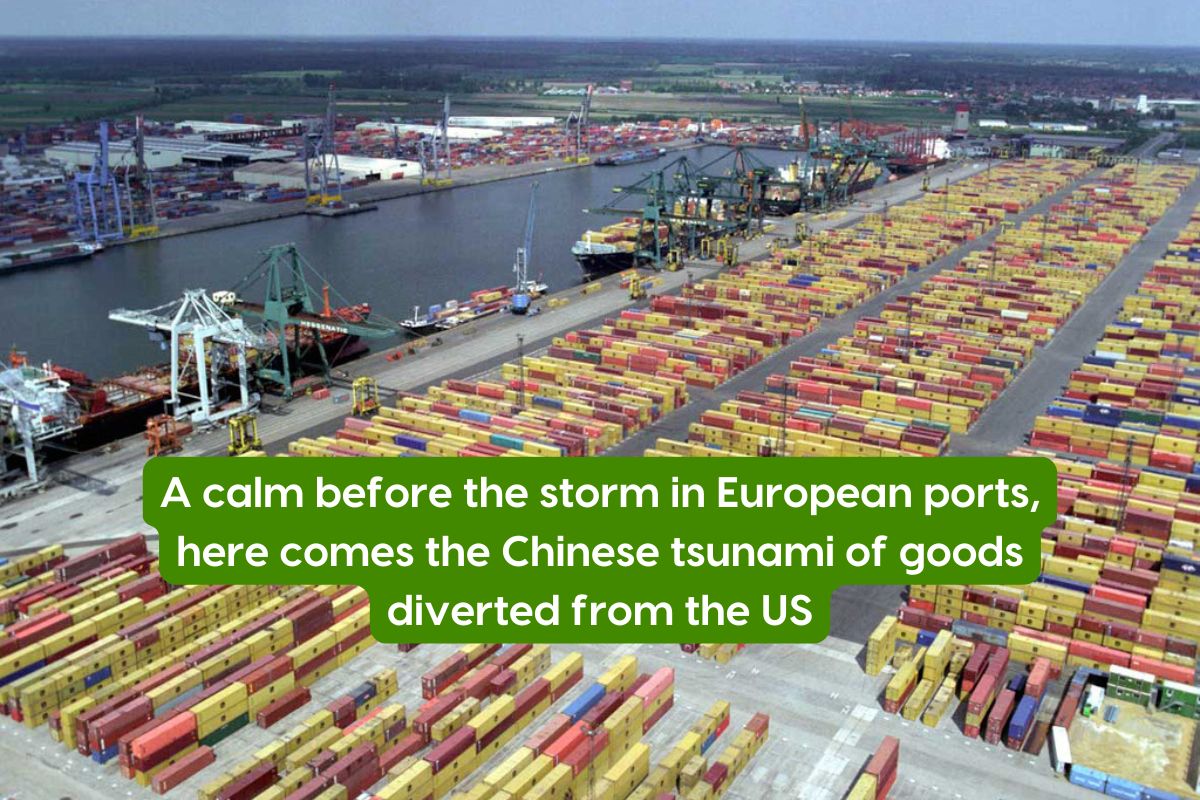Experts say that if the rush in northern European ports is not averted by mid-spring, the arrival of a Chinese tsunami of goods diverted from the US to Europe in early summer will cause unmanageable problems. “It will be a carnage.”
Workers in Belgium, including port workers, have reminded their government of the approach of Labour Day with a strike on the last three days of April. It was the fourth walkout in the past two months to protest against government budget cuts, Lloyd’s List news portal began in an article on congestion in northern European ports.
In the days before 1 May, the port of Antwerp, which was Europe’s largest container port ahead of Rotterdam in the first quarter of 2025, was virtually closed. According to the port authority, it was a “no in, no out” situation on both the sea and land sides. They started to modify the information on how to berth ships, but due to the demand exceeding the possibilities, there were not enough pilots to handle the traffic.
As a result, there were ships that had no chance to dock for days, either queuing at sea or waiting for permission to leave. This problem was compounded by the fact that 1 May is also an official holiday in Belgium, which further slowed down the process.The good news was that in Zeebrugge, Europe’s largest ro-ro terminal, where there was no strike, everything was working normally.
Queues for ships waiting to enter port have been increasing since the beginning of the year
A strike in Belgium, preceded by industrial action in France in the first months of the year, has made it harder to tackle the growing problems since the beginning of the year. One source of these is the restructuring of the federal system of maritime transport companies. Mediterranean Shipping Co. broke with Maersk, which has allied itself with Hapag-Lloyd. This disrupted the normal flow of cargo ships.
Double-dipping, i.e. the number of ships combining loading and unloading, increased, increasing the average time ships spent in port. A second problem is the low water level of rivers, which narrows shipping lanes in the congested stretches of water in front of ports. Barges are slower to reach their destinations, which also increases the strain on the continent’s already congested railways.
The biggest problem, however, is the surge in shipping traffic, especially on the main Europe-Asia route. According to Container Trade Statistics, traffic in January 2025 was 20 percent stronger than in the first month of 2024. This eased somewhat in February, but still the statisticians recorded a seven per cent increase for the first two months of the year. The beginning of the year is normally a slow season for shipping, so European ports were not prepared for the big influx.
The Chinese Lunar New Year came relatively early this year, which partly explains the surge in shipments at the beginning of the year. The continuation in February is harder to explain, as European demand was not very strong. It is likely that companies have brought forward more shipments in anticipation that the upheaval in the global transport system in recent years will continue into 2025.
The troubles experienced so far may seem like nothing compared to what is to come
However, experts warn that if congestion at the port of Antwerp is eased, it will only result in what could be described as a calm before the storm. What follows is what Peter Sand, a senior analyst at Xeneta, the world’s largest maritime and air transport benchmarking firm, described as “carnage”.
He pointed out that the tariff war between the US and China is significantly reducing the flow of goods between the world’s two largest economies, which is driving Chinese sellers to Europe. In other words, much of China’s manufacturing output is not crossing the Pacific, but is bypassing Africa and heading for Europe. The expert says this shift could become noticeable by mid-June. We saw a turnaround in the winter and spring, but what is coming in six weeks could be much worse.
Ocean carriers are already warning their customers of delays. Maersk explained the situation in northern European ports to its customers in mid-April, while HMM informed its partners that delays of up to three days could occur in Antwerp, three and a half days in Rotterdam and Hamburg. Waiting ships were also reported further north, off British ports and at Le Havre in France.
LogMASter’s competitive service from the Far East
Our rail freight services from China with short transit times!
Need just a few pallets of goods from your Chinese supplier urgently?
We will import your shipment from China and deliver it to your door with customs clearance in 18 days!
Contact our colleagues at sales@logmaster.eu!
